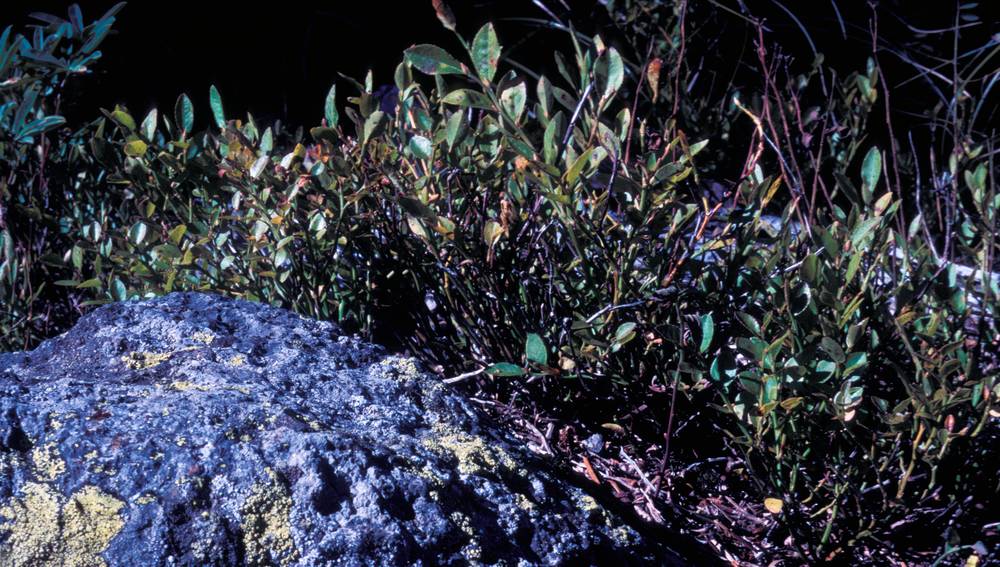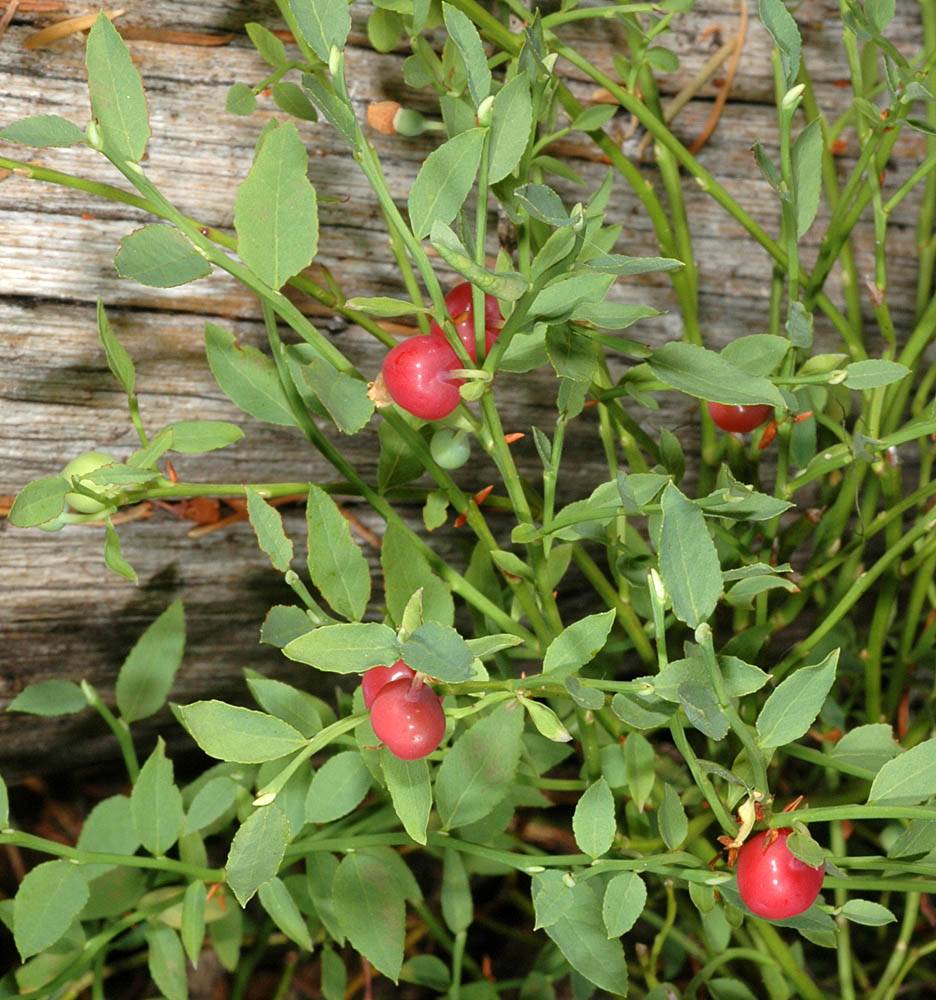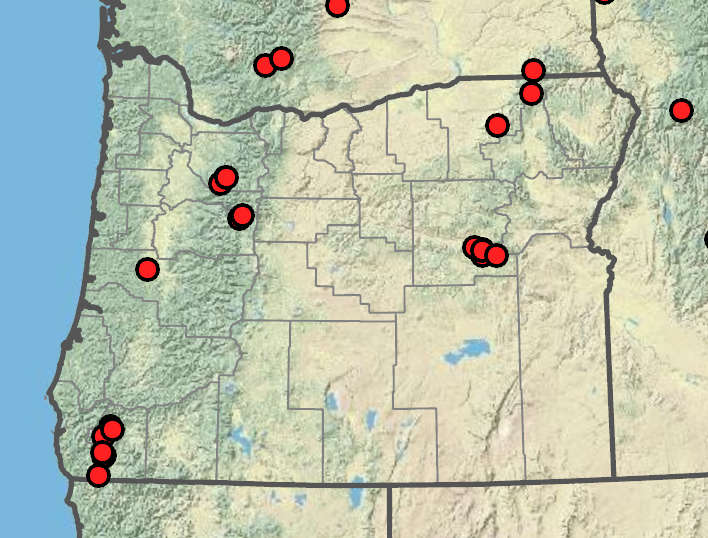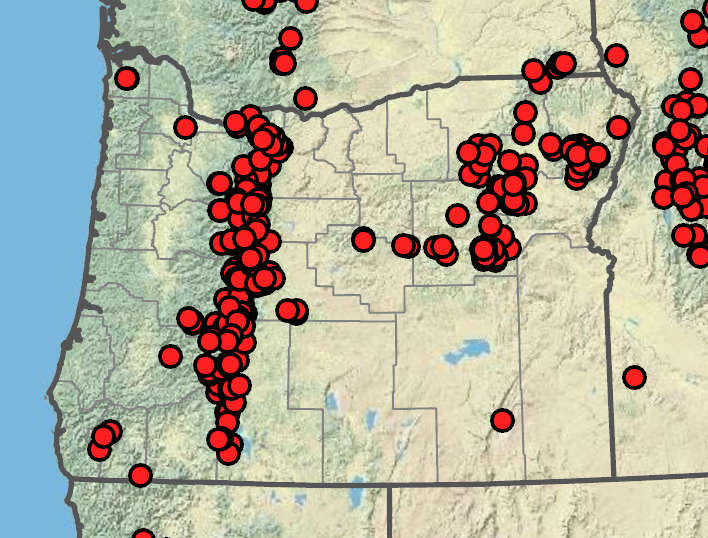Vaccinium myrtillus
Vaccinium scoparium
whortleberry
grouseberry, grouse whortleberry
elliptic to ovate, 11–20(30) × 5–10 mm, light green abaxially, green adaxially; thin; flexible;
margins sharply serrate from tips to near base, prominently veined;
tips acute;
surfaces abaxially glandular, adaxially glabrous.
elliptic to ovate-lanceolate, 7–15 × 4–14 mm, light green abaxially, green adaxially; thin; flexible;
margins finely serrate from tips to near base, prominently veined;
tips acute;
surfaces abaxially often glandular, adaxially glabrous.
solitary flowers in axils.
solitary flowers in axils.
sepals 5;
calyces shallowly lobed, glabrous;
petals 5;
corollas ovoid-urceolate to globose, 3–7 × 4–7 mm, white to pink, glaucous;
filaments glabrous.
sepals 5;
calyces very shallowly lobed, glabrous;
petals 5;
corollas urceolate to globose, 3–4 × 3–5 mm, pink, glaucous;
filaments glabrous.
4–9 mm in diameter, dark red to bluish black; without a bloom.
3–6 mm in diameter, bright red to bluish purple; without a bloom.
=24, 48.
=24.
Vaccinium myrtillus
Vaccinium scoparium
Wet mid- to high elevation areas. Flowering Apr–Jul. 1100–2100 m. BW, Casc, Sisk. ID, NV, WA; northeast to Alberta and southeast to NM, Greenland; Asia, Europe. Native.
Morphologically, Vaccinium myrtillus is similar to V. scoparium, and at higher elevations their ranges overlap. Vaccinium myrtillus differs from V. scoparium by its generally larger leaves and flowers, often sparsely puberulent twigs, and its broom-like habit.
Subalpine and alpine meadows, slopes and pine forests. Flowering May–Aug. 1000–2700 m. BR, BW, Casc, CR, ECas, Sisk. CA, ID, NV, WA; northeast to Alberta, east to SD, southeast to NM. Native.
See also V. myrtillus.
Stephen Meyers
Stephen Meyers
- Local floras:
BC,
OR,
WA
- Local Web sites:
Flora NW,
PNW Herbaria
WildflowerSearch
iNaturalist (observations)
USDA Plants Database
- LBJ Wildflower Center
- SEINet
- Plants of the World Online
- Encyclopedia of Life
- Wikipedia
- Google Image Search
- Local floras:
BC,
CA,
OR,
WA
- Local Web sites:
CalFlora,
CalPhotos,
Flora NW,
PNW Herbaria,
Turner Photog.
WildflowerSearch
iNaturalist (observations)
USDA Plants Database
- LBJ Wildflower Center
- SEINet
- Plants of the World Online
- Encyclopedia of Life
- Wikipedia
- Google Image Search





